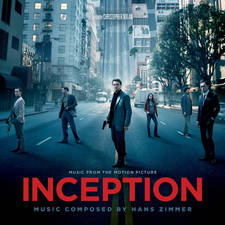Mozart: Mass in C minor - Full Works Concert Highlight of the Week
Jane Jones explores Mozart’s Marriage Mass – or how to make peace with your parents.
October comes to a close on the Full Works Concert with one Mass, Puccini’s graduation work - the Messa di Gloria - and November begins with another, one of the best loved and most widely performed sacred works by Mozart, the Mass in C minor.
Unfortunately, there is one drawback with this solemn and highly personal declaration of faith; like the later Requiem, it was left unfinished. These incomplete works are the only two Masses Mozart worked on after his falling out with the Archbishop of Salzburg, which clearly put him off writing masses to order. The Archbishop’s stipulation that the entire Mass should last no longer than three quarters of an hour, might also explain why this Mass appears to be both lavish and expansive with four soloists, an extended chorus and an orchestra which included trumpets, drums and trombones. It’s in marked contrast to the restrictions of Salzburg, but the freedom of self expression which came with Mozart’s move to Vienna wasn’t the motivation for this first non-commissioned Mass.
Mozart’s life in Vienna depended on work – teaching, composition and performance dominated his daily life. So there’s a great deal of speculation about why he should give up time for this sacred work. The answer appears to be a promise he made to to his wife Constanze that he’d compose a mass, giving thanks for their marriage. It’s a promise Mozart repeated in a letter to his father, who was starting to ask questions about when his son was going to come back to Salzburg. Mozart’s talk of the partially completed Mass to be performed in the city was an attempt to reassure and butter up his dad, who hadn’t attended his son’s wedding and wasn’t impressed with his new daughter in law.
If the intentions were clear at the start, then the questions remain as to why the Mass was left unfinished. Mozart and Constanze, now parents themselves, did turn up in Salzburg in 1783 and a performance of the partially completed Mass went ahead in the Abbey Church of St.Peter, with Constanze singing the soprano role. Sadly, their young son Raimund Leopold died in infancy, and one theory suggests that that with his son’s death, Mozart lost the urge to complete the mass he’d begun when Constanze was pregnant.
The second theory relates to Mozart’s appreciation of the work of Bach and Handel – composers he learnt about in detail only when he arrived in Vienna. He was clearly inspired by the Baroque style, and there are elements of both his great predecessors in this Mass. However, after developing techniques like counterpoint, it’s clear Mozart was inspired by intricate and operatic ideas of his own. Maybe he wanted to develop his ideas in a different project, and so abandoned the work.
And finally, there’s the most pragmatic reason for the works incomplete state. Mozart got a paid job, and as a family man with responsibilities, the Mass in C minor was set aside when the pressing need to earn a living took over.
Join me on Friday 1 November to enjoy those sections of the Mass in C minor which he did manage to complete, and let’s leave the theorists to ponder what might have been!
























